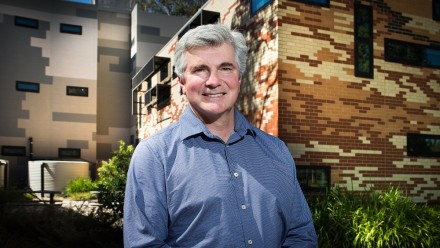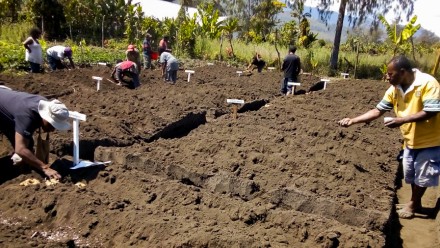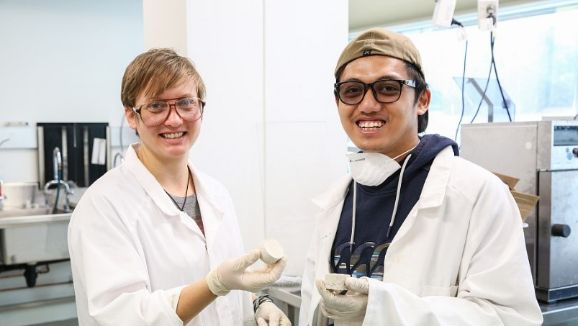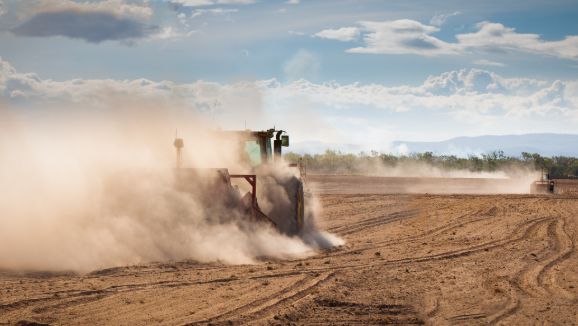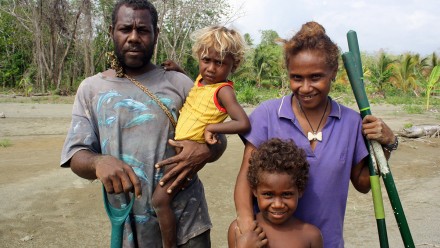2020 ANU Climate Annual Report
Message from the Director
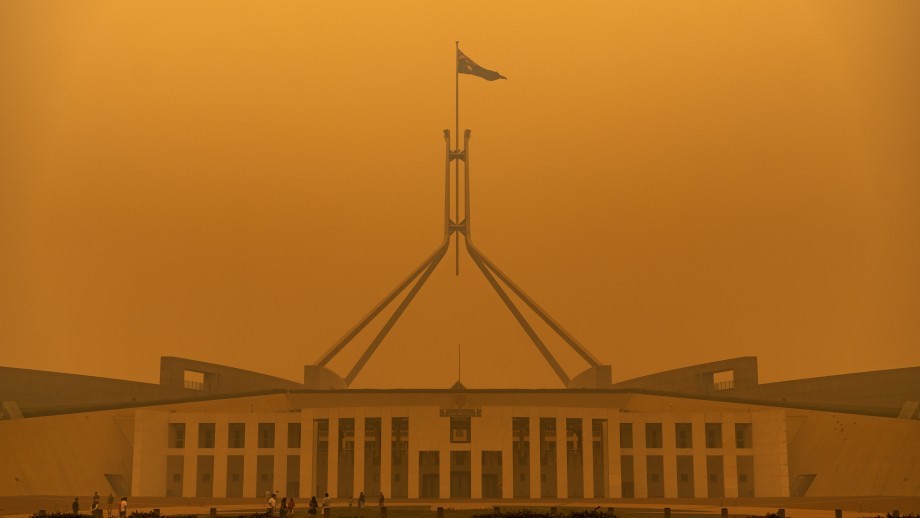
Bushfire smoke shrouds Australia’s Parliament House in Canberra during the 2019-20 bushfire season. Credit: Jamie Kidston/ANU
Here in Canberra, 2020 started in a way that I and so many others will never forget – in a haze of thick, orange smoke caused by the fires burning across much of the country. Unfortunately, climate change has intensified three of the key factors that lead to extreme fire weather, namely dry fuel, high temperatures and dry air. We have good reason to be concerned about further climate changes.
In response, many Climate Change Institute (CCI) members have collaborated to directly address these threats, including via the award-winning Bushfire Impact Working Group and the ANU-Optus Bushfire Research Centre of Excellence, which is working on early detection and extinguishing of bushfires.
Whilst 2020 has been defined globally by the COVID pandemic, it is now also in equal place with 2016 as the warmest year on record. This is in spite of the La Niña climate pattern that tends to low global temperatures. La Niña has also brought much needed rain to many areas of Australia, providing respite from the drought conditions and boosting agricultural production.
Despite 2020 being the equal hottest year on record, I’m feeling more optimistic about our collective future due to recent announcements from four of our major trading partners (China, US, Japan and South Korea) that they are aiming for net zero emissions by 2050 (or in China’s case 2060) joining existing key trading partners such as the EU and NZ.
All Australian states and territories also now have net zero emissions targets by 2050 (or 2045 for the ACT). In the lead up to the UN climate negotiations in Nov 2021, the Federal government will come under increasing international and domestic pressure to declare their own 2050 net zero target and to develop and implement some serious emission reduction strategies that bring co-benefits across our communities and environment.
Whilst we were unable to meet physically for much of the year, the Climate Change Institute has continued to deliver 29 public lectures and seminars, most of these virtually. We also witnessed growing appetite for media commentary by ANU researchers and demand for professional education around climate change, with more professional short courses scheduled for 2021.
One major highlight in 2020 has been the work around reducing the University’s own GHG emissions, which has been led by the CCI. As the National University, we have a responsibility to lead in line with world’s best practice on emissions reduction. The ANU Below Zero initiative aims to reduce our emissions to below zero as rapidly as possible and we anticipate that targets and a broad strategy will be announced in early 2021.
In 2020 we conducted our own impact evaluation and found that CCI activities help increase understanding of climate change among policymakers and the community, spark conversations, build trust and contribute to a more engaged and empowered community. I’d like to thank every one of you for interest in climate change - please keep engaging and discussing climate change with others.
Next year is shaping up to be a critical year on climate and energy, with the next UNFCCC Conference of Parties meeting to be held in Glasgow where it is anticipated that governments will ratchet up their emission-reduction commitments so as to make progress towards the Paris Agreement goals. Crucially, next year will demonstrate whether post-COVID we ‘snap back’ or instead use the situation to move to a more sustainable development pathway that clearly and constructively addresses climate change.
I’d like to thank every one of you for your interest over the past year - please keep acting on, engaging with, and discussing climate change with others.
This is the last annual report for the CCI in its current form. As of 1 January 2021, the CCI will be merged with the ANU Energy Change Institute, and the Disaster Risk Science Institute, to form a new combined entity. This means that in addition to our previous work on climate change, we’ll also be looking at energy change and disaster risk reduction. I look forward to engaging with you all across these topics in the coming year.
The following pages cover a fraction of what we’ve been working on – please visit climate.anu.edu.au/climate-highlights/2020 to find out more.
Prof Mark Howden, Director, ANU Climate Change Institute, December 2020
Research highlights
Study finds carbon pricing works

Carbon pricing has a long, conflicted history in Australia.
Yet for Associate Professor Paul Burke, this does not detract from its credibility.
“For economists, carbon pricing is seen as a key tool in the kit for reducing emissions.”
Paul, alongside colleagues Professor Frank Jotzo and Dr Rohan Best, recently published the largest ever study into the effect of carbon pricing on the growth rate of carbon dioxide emissions from the energy sector.
“In this paper, we wanted to look across the international experience to evaluate the effect of carbon pricing on emissions. The key challenge was controlling for the various other differences between countries, which we sought to do.”
The results pointed to the efficacy of carbon pricing.
“We found evidence that in otherwise similar countries, if one has a carbon price and one doesn’t, then the emissions growth rate tends to be lower in the one with the carbon price.”
“We found the difference in the emissions growth rate between countries with and without carbon pricing is about 2 percentage points, after taking various other factors into account, including the use of other policies. So, for example, instead of emissions growing by 1% per annum, if you implement a carbon price, you would expect a decline of about 1% per annum.”
“Another key finding was that a higher carbon price has more effect than a lower carbon price, as you’d expect.”
While the results point towards carbon pricing being effective, it alone is no magic bullet in the fight against climate change.
“If we want to be reducing emissions very quickly, then a carbon price is not likely to be enough on its own, unless set at a high level.”
Paul and his colleagues’ interest in carbon pricing stemmed from an interest in measuring the true effect size of carbon pricing.
“Reducing emissions is an important public policy issue. Around the world, carbon pricing is one of the main policy tools for doing that. So we were interested in evaluating the policy’s effectiveness.”
“Before we started, we didn’t know what we would find.”
Whilst this is not the first study to examine the effects of carbon pricing, it is the largest.
“There have been some previous studies evaluating individual carbon prices, but ours is the first to look at the issue from a very bird’s-eye view, across as many countries as possible.”
As for the possibility of re-introducing a carbon price here in Australia, Paul thinks the option deserves serious consideration.
“Australia’s two-year experiment with a broad carbon pricing scheme ended in mid-2014. The current policy framework means that most emissions face no effective price.”
“There are other ways to reduce emissions – one doesn’t have to go for a carbon price. However carbon pricing does have a lot of advantages and the evidence suggests that it is an effective tool.”
“A robust carbon pricing scheme is still a relevant idea for Australia. Most developed economies do have a carbon price of some type.”
You can read the paper ‘Carbon Pricing Efficacy: Cross-Country Evidence’ by Dr Rohan Best, Assoc Prof Paul Burke, and Prof Frank Jotzo here on the Springer Link website.
We know that heat kills, but accurately measuring these deaths will help us assess the impacts of climate change
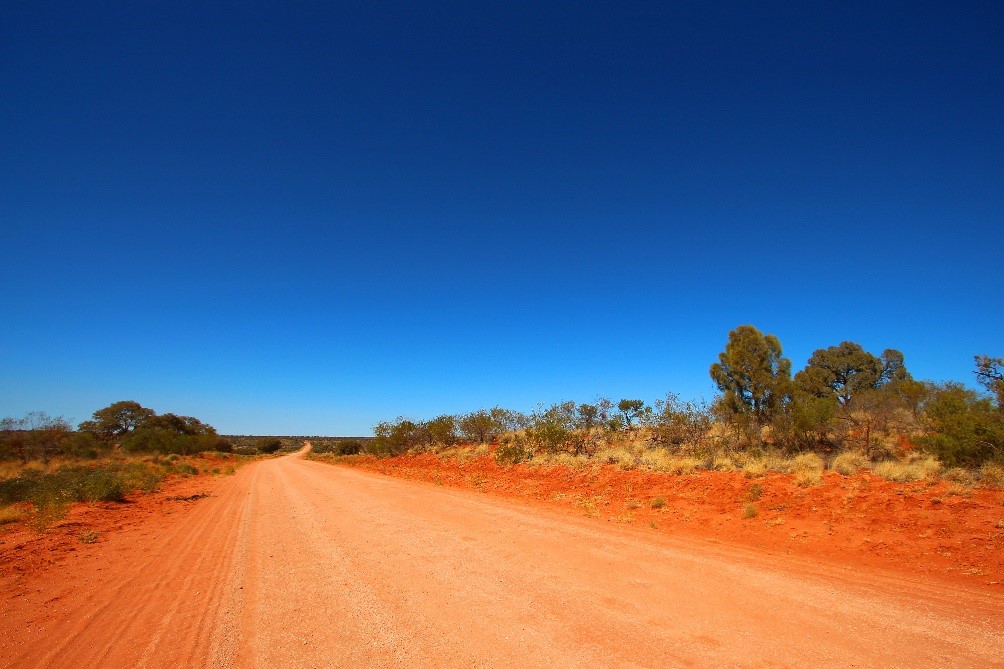
Australia is well known for its temperature extremes, with scorching hot summers and, in some areas, icy winters.
These temperatures can be so extreme that they can be fatal.
Dr Thomas Longden has been looking into this issue.
“My research has focused on measuring the number of deaths that are associated with extreme temperatures in Australia.”
His most recent study into the issue specifically examined heat-related deaths in Australia. It assessed how often death certificates had ‘excessive natural heat’ recorded as a contributory factor. The results were staggering.
“My research found that in Australia, there were over 36,000 deaths associated with the heat between 2006 and 2017. This equates to about 2% of total deaths in Australia for this time period.”
“We looked into the morbidities that are coded on the death certificate and found that only a few hundred death certificates had extreme heat recorded on them as a contributory factor.”
“This indicates that when doctors are filling out death certificates, they don’t focus on the external causes of death. Instead, they are mainly focused on the biological or internal causes of death.”
There are significant implications of not recording the impact of temperature on death certificates.
“As temperature-related deaths are one of the main measures we use to assess the impacts of climate change, it’s important we measure them accurately and consistently.”
“One of the most confronting impacts of climate change is the risk of more deaths from hot weather. Heat stress can exacerbate existing health conditions including diabetes, kidney disease and heart disease. Older people are particularly vulnerable.”
In previous work, Thomas found several contributing factors to what makes certain heatwaves deadlier than others. Surprisingly, the hottest temperatures were not always the deadliest.
“Some of the worst heatwaves were actually in Melbourne, Adelaide, and Perth. The reason why they were the more deadly heatwaves is because they involved a rapid increase in temperature.”
“So although they weren’t reaching the hottest temperatures in the data set, the temperature change was so quick, and was so drastically different to the prevailing summer temperatures, that there was limited time for acclimatisation.”
Thomas also found an emerging trend across the deadliest heatwaves of the last decade.
“These heatwaves were different to others because there was a temperature threshold that was being passed.”
“When a heatwave is 7 degrees or more hotter than the prevailing 30-day average, it increases mortality by a significant amount.”
“Climate change will make these type of events more common, and potentially push the temperature above that threshold more often.”
Climate change may also mean that periods of the year where Australia experiences heatwaves will lengthen.
“It’s similar to what’s happening with the bushfire season.”
“The bushfire seasons are starting earlier and finishing later, and that’s potentially true for what’s going to happen with the risk of heat. The troublesome period for many regions across Australia will lengthen.”
Thomas says these extended periods may catch people unawares.
“I think that’s a really dangerous possibility in coming decades, where people get caught out by strong heatwaves that happen in abnormal times of the year.”
“November and March may have more heat-related deaths in the future, whereas previously the hottest and most dangerous events tended to be in January or February.”
Thomas’ next area of focus is on how vulnerability to temperature extremes differs across communities. For example, a recent working paper focused on temperature-related mortality across occupation groups in Mexico. It examined the impact of heat and cold across agricultural, informal, blue-collar, white-collar, and unemployed workers.
“One thing that we need to understand is how vulnerability changes across socio-economic groups and occupations. For Mexico, we found that white-collar workers are significantly more resilient to or protected from extreme temperatures than other labour groups.”
“We need an improved understanding about who is most impacted by heatwaves and cold-waves. That’s where some of my recent research has focused, and we are trying to get a sense of the underlying factors that are driving vulnerability.”
"This vulnerability is not just a health issue, it’s an energy-security issue, it’s an equity issue, and typically it’s impacting people who are already vulnerable to other issues.”
“A lot of people can stay indoors in air-conditioned houses; and if their bills go up many can afford it, but there’s a lot of people who can’t.”
“There’s plenty of scope for having better energy efficiency, and better initiatives to make sure that access to heating and cooling in homes doesn’t differ by suburb and socio-economics.”
Dr Thomas Longden’s most recent studies include:
‘Heat-related mortality: an urgent need to recognise and record’ published in The Lancet Planetary Health
‘The impact of temperature on mortality across different climate zones’ published in Climatic Change
‘Extreme temperature, mortality and occupation’ released as a working paper
Research word cloud
The CCI brings together cutting edge climate research – from fundamental climate science and its effects on our biophysical environment, to societal, economic, political, legal and technological impacts and responses.

New books

The Psychology of Fake News – Accepting, Sharing, and Correcting Misinformation »
Co-edited by Dr Eryn Newman, Lecturer at the ANU College of Health and Medicine, Research School of Psychology
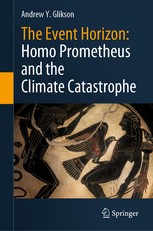
The Event Horizon: Homo Prometheus and the Climate Catastrophe »
By Dr Andrew Glikson, Visiting Fellow at the ANU College of Science, Research School of Earth Sciences
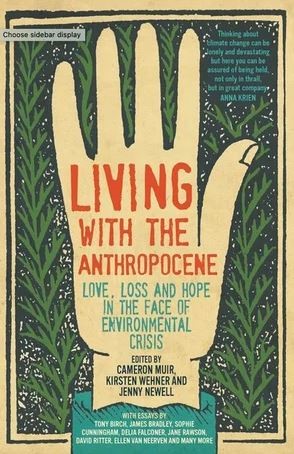
Living with the Anthropocene: Love, Loss and Hope in the Face of Environmental Crisis »
Featuring contribution by Prof Libby Robin, Professor at the Fenner School of Environment and Society
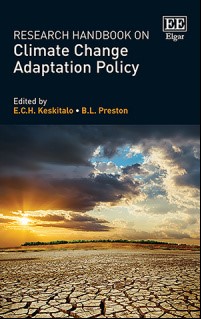
Research Handbook on Climate Change Adaptation Policy »
Featuring contribution by Dr Tayanah O’Donnell, Honorary Senior Lecturer at the Fenner School of Environment and Society

Managing Climate Change Adaptation in the Pacific Region »
Featuring contribution by PhD Scholar Melanie Pill, Fenner School of Environment and Society
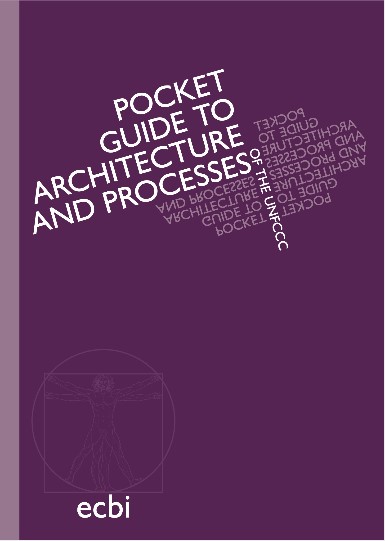
Pocket Guide to UNFCCC Processes and Architecture »
Co-authored by Dr Ian Fry – Chief Climate Change Negotiator, Government of Tuvalu; Senior Lecturer, Fenner School of Environment and Society
Research articles by theme
This research represents a tiny sample of the research on climate change happening across the University.
Climate systems
The Australian National University is part of a consortium for a new Climate Systems ‘mega’ research hub, which is part of the next phase of Australia’s National Environmental Science Program. The Hub consortium is led by CSIRO, and includes the Bureau of Meteorology, Monash University, University of Melbourne, University of NSW, and the University of Tasmania. The hub will come into effect in early 2021.
Prof David Stern co-authored research with Stephan Bruns and Zsuzsanna Csereklyei in the Journal of Econometrics, on modelling the ocean-atmosphere system using an econometric time series model. The authors estimate that the equilibrium climate sensitivity is 2.8ºC, which is close to the scientific consensus and higher than previous models using econometric methods.
A team led by Dr Steven Lade and Prof Will Steffen quantitatively assessed how human pressures on one part of the Earth system, such as carbon emissions, can affect the safe levels of pressures in other parts of the Earth system, such as water extraction or nutrient use.
Dr Steven Lade also held a position as a research scientist at the Earth Commission Secretariat. The Earth Commission will assess the Earth system conditions for a safe and just corridor for human development. In 2020, Prof Xuemei Bai has also been engaged as the co-lead of the Earth Commission's Working Group on Translation and Methods.
Dr Mona Mahani has been developing a global trend analysis of the frost season length, as shown in the figure below, noted as frost window. From a global perspective, the analysis demonstrates that despite an overall warming trend in the annual minimum temperature over the last four decades, there exist regions of localised increase in frost season length. These regions showing positive trends are depicted in blue, which indicates broadening of the frost window and therefore cooling conditions, whereas the regions depicted in red indicate negative trends and hence warming conditions. Understanding these changes at global scale is an important step in determining exposure, vulnerability and focus for adaptation. In addition, it could be particularly important at regional scale for the agricultural sector in managing the frost risk and minimising the frost-related losses.

A figure from the frost analysis research by Dr Mona Mahani. The figure demonstrates that despite an overall warming trend in the annual minimum temperature over the last four decades, there exist regions of localised increased in frost season length.
Climate change knowledge production and use
Dr Ruth O’Connor, Prof Joan Leach, Dr Lorrae Van Kerkoff, and others, co-authored a paper exploring how environmental managers engage in collaborative research. The paper drew upon two cases from Australia and South Africa. The results showed that environmental managers generally valued science and were shown to contribute knowledge about stakeholders, local ecosystems and how to apply science like climate modelling. However, their input to issue definition at project conception was limited.
Dr Claudia Munera Roldan and Assoc. Prof Lorrae Van Kerkoff published research exploring whether, how and to what extent the governance of knowledge helps or hinders managerial change towards more proactive climate adaptation. They found that the results of scientific experimentation and modelling (mainly in the natural sciences) are often stated as the preferred source of knowledge to inform decision making, forming a dominant narrative that climate adaptation can and should be driven by scientific and technical information. However, institutional arrangements in practice were typically more diverse in the knowledge sources that contribute to protected area policy and practice. They propose that understanding institutional arrangements that shape adaptation decision contexts can help to address barriers for using climate information effectively, including understanding its limitations.
Climate change mitigation
Distinguished Prof Xuemei Bai co-authored a paper that analyses the water, carbon, reactive nitrogen, and phosphorus footprints of food consumption in Chinese urban regions, and demonstrates how such information can help to formulate tailored mitigation strategies. The results show that in three of the largest urban regions of China, 44–93% of the four footprints are embodied in transboundary food supply. The size of the footprints and the effectiveness of mitigation measures in food supply chain vary across the environmental footprints and urban regions. However, targeting agriculture and food processing sectors in only three provinces can reduce these footprints by up to 47%. The findings show that the analysis of the environmental footprints along the transboundary food supply chains could inform individualized and effective mitigation targets and strategies.
Prof Bai also co-authored a paper titled Systematising and upscaling urban climate change mitigation. The paper highlights four core areas for systematizing and upscaling urban climate mitigation solutions. These are a) more and better data and associated machine learning methods, as there is increasing potential to compare types of cities and leverage collective understanding; b) demand-side action as related to both behavioural change and modified social practices relevant to urban space deserve more academic attention and integration across a diverse set of social sciences; c) at the urban scale, measures and solutions that coordinate mitigation coherently with adaptation and broader sustainable development goals require explicit conceptualization and systematization; d) developing governance frameworks that translate scientific exercises into concrete, realistic and organized action plans on the ground, for all cities.
Climate change and mental health
Prof Iain Walker was successful in his funding bid for his research proposal Building community resilience to promote mental health in bushfire-affected communities. This bid was part of the Australian Government’s $5 million investment into the Medical Research Future Fund, for research on the health effects of the recent bushfires.
Climate change and economics
Prof Warwick McKibbin co-authored a paper that analysed the economic and environmental outcomes that are likely to result from the Paris Climate Agreement. The authors found that if all regions achieve their NDCs, the Agreement significantly reduces CO2 emissions relative to baseline. However, global emissions would not decline in absolute terms relative to 2015 levels, let alone follow a path consistent with a 2 °C stabilization scenario. The authors also found that leaving the Agreement raises GDP for the country that leaves, but it also sharply reduces the domestic co-benefits the country receives as a side effect of controlling CO2. For each country they considered, the net effect of withdrawing is negative: the loss of co-benefits exceeds the gain in GDP. That is, we show that when co-benefits are considered, it is in each country's self-interest to remain in the Agreement.
Despite this, the authors found that there are still large climate benefits produced by the Agreement. They also found that every region receives a net benefit from participating in the Agreement, and that all regions are better off participating in the Agreement than withdrawing from it – even without accounting for the co-benefits. In monetary value, the global climate benefit of the Agreement through to 2030 is $2.25 trillion.
Prof McKibbin also contributed to Chapter 3 of the International Monetary Fund World Economic Outlook. The chapter is titled Mitigating climate change – growth-and-distribution-friendly strategies. The chapter suggests that combining steadily rising carbon prices with an initial push in green investment would see both the necessary reduction in emissions, as well as placing the global economy on a more sustainable and strong footing in the medium term.
Climate change and coastal impacts
Dr Tayanah O’Donnell authored and co-authored several papers on coastal climate policy across Australia, managed and planned retreat, and the complex relationship between coastal private property rights and climate change adaptation.
In a paper published in the Ocean and Coastal Management journal, Dr O’Donnell examines critical legal geography and coastal climate change adaptation. In particular, she examines the role that complex political ecologies and legal geographies have played in underpinning a decade of idealised integrated coastal management in New South Wales, Australia.
In another paper, Contrasting land use policies for climate change adaptation: A case study of political and geo-legal realities for Australian coastal locations, Dr O’Donnell critically examines how local governments use law and land use policy to respond to climate change adaptation in three coastal localities in New South Wales, Australia.
Dr O’Donnell published a paper regarding private coastal properties, which examines cultural ideas about private property and the complexities of using land use planning law as an enabler of climate change adaptation.
Dr O’Donnell also co-edited, published a chapter for, the publication Legal Geography: Perspectives and Methods. Dr O’Donnell’s chapter is titled Inside-Outside: An Interrogation of Coastal Climate Change Adaptation Through the Gaze of ‘The Lawyer’.
Climate change and museums
Prof Libby Robins published a paper in the Journal of the Philosophy of History, which considers how the new epoch of Earth, the Anthropocene, where humans have become a geological force, poses challenges for exhibitions and reshapes museums themselves. Prof Robins states that crucial to managing stories, collections and objects in Anthropocene times is the capacity to change course, to remain open to new developments, using performances, events and “pop-up” exhibitions alongside traditional museum offerings.
Transition to a low-carbon, sustainable society
PhD Scholar Yuan Peng published a paper with Distinguished Prof Xuemei Bai, examining the direct and flow-on effects of a city-level direct-funding scheme on urban low-carbon initiatives, taking Shanghai as a case study.
The finding shows that, over the 11 years of its implementation, the fund has led to a carbon reduction outcome and has become a catalyst for a series of institutional changes by enabling and enhancing cooperation across numerous government departments in Shanghai.
The study demonstrates that a well-designed, city-level direct-funding scheme can fill the “implementation” gap between the policy intentions (i.e. the low-carbon initiatives and implementation framework) and the policy outcomes (e.g. carbon reduction and the institutional formation in the transition). More importantly, it may nurture and enable a pool of policy experiments and innovations for effective policy learning, which may justify the potential attractiveness of a city-level direct fund in managing the low-carbon transition.
PhD Scholar Yan Zhang published research co-authored by Distinguished Prof Xuemei Bai, and Assoc. Prof Franklin Mills, exploring occupants' energy-related behaviour in residential buildings with empirical data from a large-scale survey in Beijing, China. The study aimed to present an in-depth and comprehensive picture of occupant behaviour. The results show that, typically, purchase behaviour is overall energy-efficient, as most appliances purchased are energy efficient. On the other hand, there is a lack of apparent linkage between purchase and habitual behaviours, a comprehensive policy framework incorporating different measures for different types of behaviour is necessary. The complexity underlying behavioural choices also suggests the necessity of better understanding the behavioural patterns and their determining factors, as well as avoiding any simplistic assumption in policymaking that aims to consider behavioural factors.
CCI member Dr Tayanah O’Donnell is also the Director of Future Earth Australia, and was a member of the Expert Reference Group for the Sustainable Cities and Regions – 10 year strategy to enable urban systems transformation report, that was co-produced with the Australian Academy of Science.
Prof Frank Jotzo co-authored a working paper that reviews and evaluates key policy initiatives and strategies designed to strengthen regional economic, social and environmental outcomes in the Latrobe Valley (Victoria, Australia) in the three years following the closure of the Hazelwood power station. The paper finds that Hazelwood case study provides support for a number of propositions about successful regional energy transition including that well managed, just transitions to a prosperous zero-carbon economy are likely to be strengthened by proactive, well integrated industry policy and regional renewal strategies; respectful and inclusive engagement with workers and communities; and adequately funded, well-coordinated public investment in economic and community strategies, tailored to regional strengths and informed by local experience.
Prof Jotzo also co-authored a paper, alongside PhD Scholar Zeba Anjum and Dr Thomas Longden, that takes stock of approaches for evaluating and choosing options for public investment in projects and programs that support economic recovery, are consistent with a low-carbon transition, and bring broader economic, environmental and social benefits. The paper finds that promising categories for public stimulus include renewable energy supply, including by fast-tracking renewable energy zones and transmission investment, some types of transport infrastructure projects, energy efficiency programs including retrofits of public housing and buildings, and land management projects including to restore ecosystems that were damaged in Australia’s bushfires. Investments like these hold promise to create jobs and local economic activity, while supporting lower-carbon outcomes and achieving other societal goals.
Prof Jotzo also co-authored an analysis of China’s recent Government Work Report, in light of China’s decisions regarding low-carbon stimulus following COVID-19. The analysis suggests that while a repeat of recovery measures focused on high-emissions infrastructure following the 2008 global recession is not in the cards, a Chinese Green New Deal is not in sight either. Much investment is flowing to fossil fuel industries, whilst support policies for renewable energy industries are absent from Beijing’s recovery program.
Climate change and water
PhD Scholar Ruirui Zhu, Assoc. Prof Barry Croke, and Prof Anthony Jakeman co-authored research looking into the impact of climate change on groundwater discharge in respond to groundwater levels in the Murrumbidgee River in Australia since 1975. They found that all eight of the headwater catchments they studied in the Murrumbidgee have experienced significant reductions in groundwater discharge since the 1990s. These reductions show a close correlation with climate factors and can largely (estimated here at >75%) be attributed to climate factors. The decrease in precipitation combined with the increase in potential evapotranspiration together contribute to the noticeable decrease in groundwater discharge, with the decrease in precipitation outweighing the increase in potential evapotranspiration in reducing groundwater discharge. In particular, the decreasing rainfall in autumn accounts for the largest proportion of the decrease in groundwater discharge although groundwater discharge is the most sensitive to winter rainfall. The authors suggest that there needs to be more research into the relationship between groundwater and climate factors, to better understand how climate change will impact groundwater.
Dr Ruth O’Connor co-authored a paper investigating the relationship between water temperature and the aquatic life in a hot spring complex in north Queensland. The findings indicate consistent increases in water temperature expected under climate change could decrease biological richness in tropical aquatic ecosystems.
Carbon capture and utilisation
The ANU Climate Change Institute, alongside Monash University, Curtin University, The University of Queensland, Queensland University of Technology, and CSIRO, have collaborated on the submission for a national and international initiative, ARC Research Hub for Carbon Reuse and Transforming Emissions, or ‘ARC RECREATE’. The submission’s outcome will be determined by mid next year.
This Research Hub aims to transform carbon emissions in the natural gas and chemical sectors of the Australian economy through a comprehensive program of research and development aimed at creating value from carbon dioxide emissions.
We would like to extend thanks to all ANU Chief Investigators (CIs) on this initiative:
Key CI #5: Assoc. Prof Llewelyn Hughes
CIs:
- Prof Wojciech Lipinski
- Assoc. Prof Zongyou Yin
- Dr Emma Aisbett
- Dr Fiona Beck
Climate change communication
PhD Scholar Nic Badullovich, with co-authors Dr Will Grant and Dr Bec Colvin, authored a systematic map of the literature evidencing the effect of framing in climate change communications.
PhD Scholar Inez Harker-Schuch, with co-authors Dr Steve Lade, Assoc. Prof Frank Mills and Dr Bec Colvin, published research on children’s attitudes about climate change in Australia and Austria.
Climate change and society
Dr Bec Colvin published an analysis of the media representation of social identity divisions associated with the “Stop Adani Convoy” protest movement. This analysis also featured as a Research Highlight in the Nature Energy publication.
Dr Bec Colvin also, alongside Prof Helen Ross and Assoc. Prof Claudia Baldwin, authored an editorial for the Australasian Journal of Environmental Management on social dimensions of energy system change.
Climate change and health
Prof Sotiris Vardoulakis co-authored a special issue in the journal The Science of the Total Environment on Urban Environmental Health Interventions towards the Sustainable Development Goals. Cities around the world, and particularly in rapidly urbanising low and middle-income countries, face many challenges related to overpopulation, lack of adequate resources and infrastructure, climate change, urban heat islands, extreme weather, air pollution, and related illnesses, inequalities and productivity losses. This special issue focuses on the solutions that promote the Climate Action and other SDGs.
Prof Vardoulakis also co-authored research and health communication around smoke exposure during the catastrophic bushfires of 2019/2020. This involved a number of publications which highlighted the need consistent and nuanced health messaging, and emphasised the link between air pollution, bushfires, and climate change. One piece was published in the Medical Journal of Australia, and another was published in the JAMA Internal Medicine journal.
Prof Vardoulakis also co-authored a publication on how to overcome barriers among primary healthcare professionals in tackling the health risks of heatwaves and dengue fever under climate change in China.
Dr Thomas Longden co-authored a working paper examining the impact of heat and cold across agricultural, informal, blue-collar, white-collar, and unemployed workers. The results show that white-collar workers are significantly more resilient to extreme temperatures than other labour groups, especially the elderly/retired, agrarian, and informal laborers.
Climate change, food, and agriculture
Dr Steven Crimp is continuing his work as Project Leader of the Climate Change Agriculture opportunities for enhanced food production in Papua New Guinea project, with the Australian Centre for International Agricultural Research (ACIAR). This project is improving food security outcomes in rural farming communities in Papua New Guinea by informing food productions decisions with seasonal climate information. Dr Rachel Friedman has also been contributing to this project.
Dr Crimp and Dr Friedman have also been contributing to the newly formed Resilience Initiative for Food and Agriculture, which is a partnership between the Commonwealth Scientific and Industrial Research Organisation, the Australian National University, and the Department of Foreign Affairs and Trade. The goals of the Initiative are to gain better insights into food system resilience in the Asia-Pacific, deliver development-ready solutions based on excellent science, shaped by local contexts and build capacity for resilience through in-country partnerships.
Third year undergraduate student Ben Galea, Prof Jamie Pittock, and Dr Steven Crimp, published research looking into the implications of new hydropower stations in the lower Mekong River basin on fish populations. They found that the dams would cause declines in fish populations, which would then need to be replaced with other sources of protein in order to maintain food security in the region. If the fish protein was replaced with beef, it would cause more than a 20% increase in annual greenhouse gas emissions in Cambodia, and 4-12% increase in annual emissions from Laos. This demonstrates that although hydropower is a source of lower-emissions electricity, the flow-on impacts of developing the hydropower stations can lead to increases in emissions from other sectors. The authors argue that this needs to be taken into account, as it challenges whether hydropower can be seen as a ‘clean energy’ option in the area.
Education
As the impacts of climate change become increasingly apparent, people who understand its multiple dimensions and can contribute to developing, communicating and implementing innovative solutions are in increasingly high demand.
Education spotlight
Moving teaching online in the era of COVID-19
As Canberra went into lockdown in March 2020, teaching and learning for those at ANU made the transition online.
Opening up new career paths with a Master of Climate Change – Demi Tinning

Demi Tinning (pictured) says the research projects she undertook in her Master of Climate Change program have led her to consider research as a possible career path.
For Demi Tinning, studying a Master of Climate Change was an opportunity to make a difference in the world.
“After my undergraduate degree, I wanted to look at doing more study, but in a way that has real-world experience. Where what you do is tangible – I wanted it to count towards something.”
“I think that the Master of Climate Change is really good at that.”
Initially, she tossed up between pursuing further study in resource management or climate change.
“I ended up going with the Master of Climate Change program because it was so broad, you can fit any of your research and passions into it, and mould the program around your goals and interests.”
“In this Masters, I’ve been able to study the intersections between environmental and human health, natural hazards, earth science, biodiversity, international diplomacy, science communication, and also natural resource management.”
The Master of Climate Change has also given Demi the opportunity to undertake research projects, which has opened up her eyes to a new potential career path.
“I’ve been able to do two research-related courses – one through the Australian National Internships Program, and one through the ANU Climate Change Institute. I learnt a lot from these – they allowed me to write and research topics that I’d never really thought about before, and that I wouldn’t have looked into if I hadn’t been undertaking these projects.”
“I hadn’t really considered research as a career before, but I found that I really enjoyed these projects, which has made me start thinking along different career pathways.”
As Demi wraps up her final semester of the program, she finds it hard to pick just one favourite moment from her Masters.
“I can’t really think of one specific highlight, I’ve really loved all of the program!”
“One reason why I think the whole experience has been a highlight for me is because of the attention that the teaching staff give. During the COVID-19 lockdown, all my study plans changed, and I was worried that I might not even graduate this year, but they helped me out, and it turned out to not be a stressful situation at all in the end!”
“I’ve also loved meeting so many peers who are from all walks of life, and have such different perspectives to myself – I made friends from overseas that had completely different life experiences, and amazing jobs, and interesting experiences.”
And would she recommend the program to others?
“Yes! Climate change is such a broad issue, and the fact that it’s interdisciplinary means you can come into it from any area and see how you can apply your skills passions and goals.”
“It’s so valuable to encourage students to consider multiple perspectives, because these challenges are really complex.”
“This Masters allows you to do that. It’s a really holistic approach, and it’s really important to approach such a big problem this way.”
The Master of Climate Change program has been recently updated, and now takes just 18 months full-time. To find out more, please visit the Programs and Courses page.
Living with flooding as our climate changes – Phaothai Sin-ampol

Through his PhD research, Phaothai hopes to help those in his homeland who are impacted by increasing flooding.
Flooding in the floodplain area of Lower Northern Thailand has been having disastrous consequences for the locals for decades.
Growing up in the region, Phaothai lived through many of these flooding events, but did not see any resolutions forthcoming.
“The commonly given reason for the flooding is that there is no dam infrastructure upstream; however the reality is much more complicated than this.”
“Climate change has been causing unprecedented levels of flooding which are impacting people’s lives, and people are beginning to realise this now.”
With a background as a lecturer in Human Geography, Phaothai came to The Australian National University in 2017 to research possible ways for individuals in rural and urban communities to stabilise their situation, and transform flood risk management in their area.
“Through my PhD research, I hope to contribute to making significant changes for people in my homeland to live with floods more peacefully.”
For his research, Phaothai has been working closely with both local people and those in government positions.
“The concept of ‘community-based adaptation’ is key for this process, to address the multiple pressures that the local people are facing from climate variability, centralised development and technocratic governing.”
“I spent more than a year doing fieldwork in Thailand to help develop provincial planning processes. I worked closely across different social groups, to learn what local people have been doing on surrounding landscapes to help live with the floods, and trying to reach out to policymakers and practitioners to understand the situation from their perspectives.”
During his fieldwork, Phaothai realised the importance of putting a spotlight on the local communities, who are left out of policy and planning processes.
“There has been no collaboration with these people in terms of developing policies. Yet they are the most important agent in reflecting the inequality between rural and urban communities, and reflecting who in the community is impacted most by the flooding.”
“Even though some of them, such as rural farmers, women, elderly people in the city and the urban poor, perceived themselves or are labelled as vulnerable during flooding, they put the hardest effort to anticipate a better future for the community. They also raised the principle of sharing the risks of flooding more equitably between rural and urban settlements, which is an idea that the state government has not raised.”
Moving forward, Phaothai says there needs to be more collaboration between policy-makers, practitioners, and the community.
“In order to balance out power dynamics, the state government should involve the local people in developing policies and responses to the flooding. Academic and civil society sectors, from regional to international levels, as well as the river basin committee, should facilitate iterative learning from the local people about flood-related and livelihood contexts to reform policy.”
Addressing climate change adaptation will be key to this, says Phaothai.
“Climate change is being seen as the ‘next important step’ that requires the government to really concentrate on diverse livelihood patterns and alternatives to adapt better to increasing climatic variability. These adaptation measures can be co-designed with local people themselves.”
The ANU Climate Change Institute awarded Phaothai with a supplementary PhD scholarship in 2018. He has used the funds to participate in both fieldwork and conferences, as well as enrolling in some specific courses to develop his research and expand his expertise to help local communities in the future.
Climate Essentials professional short courses – June, Nov

Credit: Sumarie Slabber/Flickr
In 2020, the Climate Change Institute ran two online professional short courses on recent advances in climate science and the social, policy and economic aspects of climate change.
Due to the COVID-19 lockdown and restrictions, the courses were successfully transitioned to online delivery.
Offering the courses online allowed participants to join from across Australia, rather than just those in Canberra.
What people said:
“This was quite possibly the best course I've attended. The content was fascinating and the presenters absolutely nailed the level of detail required for the level of knowledge that I have.”
“The course had a fantastic collection of sessions which complemented each other to create a really great foundation for work on climate science/ policy.”
“It was an excellent experience and I'm grateful to have heard from the wonderful speakers and engaged with the participants. It was particularly valuable looking at climate change through a multitude of lenses in quick succession, as it served as a reminder that in order to address it appropriately, we really need to take a transcontextual approach.”
For information on future short course offerings, please email climate@anu.edu.au
Climate Essentials for Agriculture short course
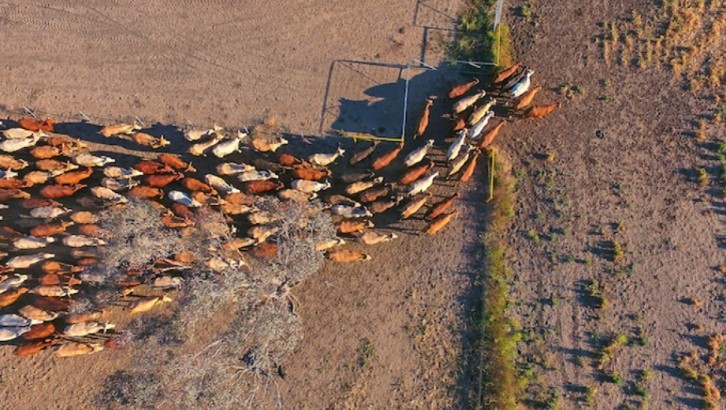
On Monday 28 Sept – Thursday 1 Oct, 2020, the Climate Change Institute held a short course titled Climate Essentials for Agriculture.
The course provided an overview of the latest developments around climate change for those working in agriculture and on food security. It covered both the science of climate change and how we can respond.
100% of respondents to our survey on the course said that they would discuss what they had learnt in the course with others.
What people said:
“Current, relevant, important information, would recommend to everyone”
“The program was very good, well organised and great content. One of the better ones I have attended.”
“It’s amazing to have time with the scientists, I really appreciated being able to speak to the people leading the science in this space and I think it's invaluable to the industry and society that we are in close contact with our scientists.”
For information on future short course offerings, please email climate@anu.edu.au
Revised Master of Climate Change program
The Master of Climate Change program has been revised to a new, shorter 72 unit structure, allowing students to complete in the equivalent of 1.5 years of full time study (instead of 2 years). The program offers significant breadth and depth of study in climate change science and policy, including economics, law, policy and governance aspects.
You can find out more about the revised Master of Climate Change on its Programs and Courses webpage.
New Graduate Certificate in Climate Change Policy
The new Graduate Certificate in Climate Policy was launched in 2020. This 24 unit program (equivalent to 1 semester of full time study) may be completed in-person, online, or a combination of study modes.
The Graduate Certificate in Climate Policy provides the opportunity to develop a cutting-edge understanding of climate policy, informed by research-led teaching delivered by some of the world’s leading researchers in climate policy.
You can find out more about the Graduate Certificate on its Programs and Courses webpage. You can also find out more about other ANU Graduate Certificates that include study on climate change here.
Adaptive Doctors: preparing tomorrow’s doctors for practice in a world destabilised by declining planetary health
ANU Medical School ran a project to develop new learning resources on climate change and health in collaboration with current medical students and in partnership with the Council of Academic Public Health Institutions Australasia (CAPHIA). This project was led by CCI member Dr Claudia Slimings.
There is currently a gap in formal learning and teaching in medical schools in Australia on the future human health impacts of climate and other ecological consequences of human actions. This project sought to address this gap.
The resources were delivered for the first time in October 2020 to students in their 2nd year of the ANU medical degree (MChD).
The content of the e-learning module was structured as the problem (contribution of human activity to environmental changes), the effect (mechanisms by which human health is affected by climate change), and the solution (the role of health care professionals in advocating for policies and infrastructure that promote healthy and environmentally sustainable behaviours).
The group work consisted of a 2-hour facilitated tutorial using Zoom, designed to develop advocacy skills and identify practical ways to contribute to improving planetary health using a set of trigger scenarios.
Future plans for the project are to disseminate the learning resources through ANU-wide, national and international networks of students, educators and practitioners.
The project was funded by an ANU Linkage for Learning & Teaching Grant (round 1 2020), $15,040.
New course offering: Climate change – past, present, and future
In addition to the existing 119 courses on climate change at ANU, Professor Nerilie Abram and Dr Joelle Gergis have developed a new undergraduate course to provide a multidisciplinary foundation for understanding climate variability and change from regional to global scales.
For more information on the course, and future offerings, you can visit its Programs and Courses webpage.

A creative piece by Caitlyn Baljak, a student of the ENVS3013 Climate Change: Past, Present and Future course, depicting Autumn rainfall anomalies in south-east Australia.
Reworking the Fire, Flood, and Drought course offering
Dr Joëlle Gergis, Assoc. Prof Geoff Cary, Dr Luigi Renzullo and Dr Joseph Guillaume developed and presented a renewed coursework offering on ‘Fire, Flood and Drought’ in the Fenner School of Environment and Society. Previously, the course was titled ‘Weather, Climate and Fire’.
The course provides a foundation for understanding Australian weather, climate, and bushfire science. You can find out more about this course offering here on its Programs and Courses page.
The climate change debate: truth, lies, and misconceptions – online delivery
This year, the community course, The climate change debate: truth, lies, and misconceptions, also went online. This course features presentations by a range of Climate Change Institute members, and explores the science, history and issues surrounding the issue of climate change. You can find out more about the course, and enrol for the next offering in 2021, on this ANU Centre for Continuing Education webpage.
Public policy
We regularly conducted private briefings for parliamentarians and government departments on a wide range of climate related topics in. Our members also had numerous state, national and international advisory roles.
Here are some examples of policy engagement and outreach by Climate Change Institute members.
Public policy and engagement spotlight
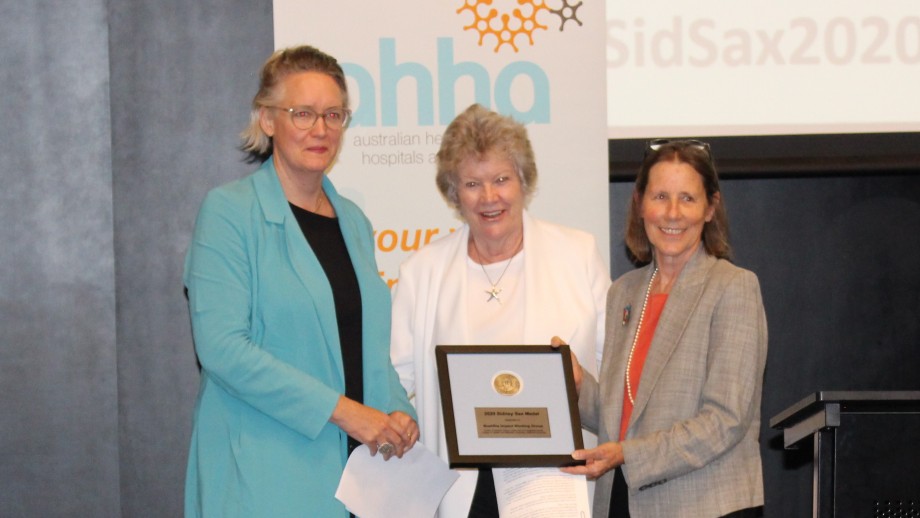
Bushfire Impact Working Group honoured »
Bushfire Impact Working Group awarded the Sidney Sax Medal for outstanding contributions to Australian healthcare.

Sotiris Vardoulakis and colleagues – work on smoke »
Professor Sotiris Vardoulakis and collaborators recognised for public health advocacy & leadership during the 2019/20 “Black Summer”
ANU contributions to the Intergovernmental Panel on Climate Change (IPCC)
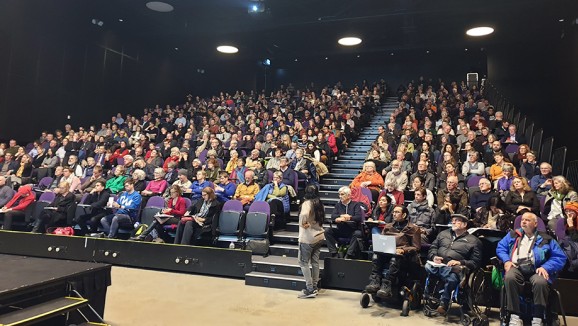
IPCC Special Report on Climate Change and Land
Unprecedented land exploitation is contributing to climate change, whilst at the same time land potentially offers solutions to reducing greenhouse gas emissions, including reforestation and storing carbon in soil.
Given the stark warnings outlined in this report, it’s vital that the findings are integrated into policy and management decisions urgently – we have no time to lose.
– Professor Mark Howden, IPCC Vice Chair
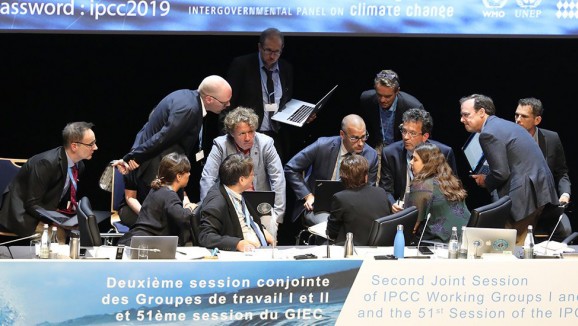
IPCC Special Report on the Ocean and Frozen Regions in a Changing Climate
Earth’s oceans and ice are under threat from climate change, but there’s still time to avoid the worst scenarios if we act urgently.
Australia’s coastal cities and communities can expect to experience what was previously a once-in-a-century extreme coastal flooding event at least once every year by the middle of this century – in many cases much more frequently.
– Professor Nerilie Abram,
Coordinating Lead Author of the report
Building a community of climate researchers and teachers
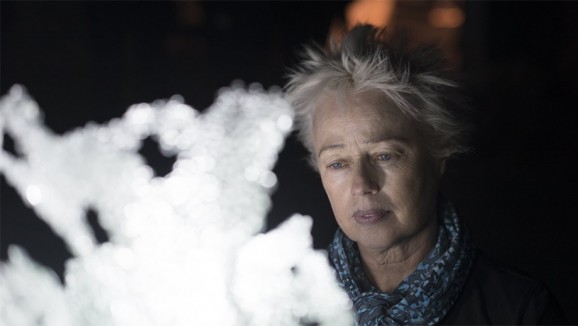
Member profile – Ngaio Fitzpatrick
Ngaio Fitzpatrick is an artist and Visiting Fellow with the ANU Climate Change Institute.
“Working with the CCI, I’ve been inspired to communicate the urgency of climate change and the need to act using my work and that of other artists. Art can connect the viewer to science and environmental issues in ways that research reports, graphs and data do not. It can also offer different experiences that may stay with the viewer for an extended period of time.”
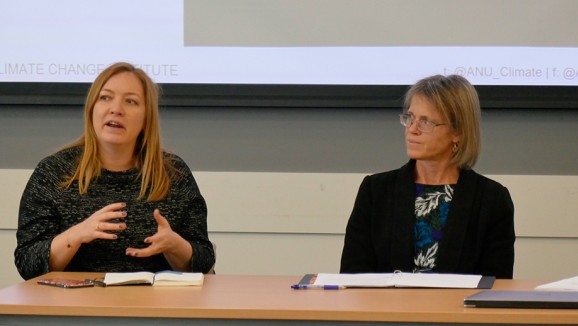
CCI Advisory Committee welcomes four new members representing government, business and NGO sectors
In 2019, the CCI Advisory Committee was expanded to include representation from government, business and NGOs. Jo Evans (Department of the Environment and Energy) and Emma Herd (Investor Group on Climate Change) spoke at a seminar for CCI members outlining government and the investment industry’s priorities for climate research.
ANU climate events
What people said:
A well-run informative event of great political, social and topical value. Well done.
These events are always informative, useful and very important. Lately I've been bringing someone who needs convincing and is slowly coming round. Our discussions afterward are animated and these sessions really help!
Very clear and erudite summary of a large, complex report, presenting thoroughly researched and peer-reviewed facts in a straightforward, unexaggerated manner.
Here are some examples showing the diversity of our 2019 events.
An overview of how our climate is changing and how we’re responding to those changes, including discussion of the economic benefits of climate action.
Food generates a lot of greenhouse gas emissions. How do we motivate people to make low-carbon choices that suits them? With writer Jo Clay.
This symposium explored the role and impact of gender on climate change adaptation using presentations, performances, video, art and Q&A.
In the media
The media is a vital channel for communicating ANU climate research to the broader community. Climate researchers across ANU engage with media on a daily basis. In 2019:
Here are some examples of 2019 media coverage:
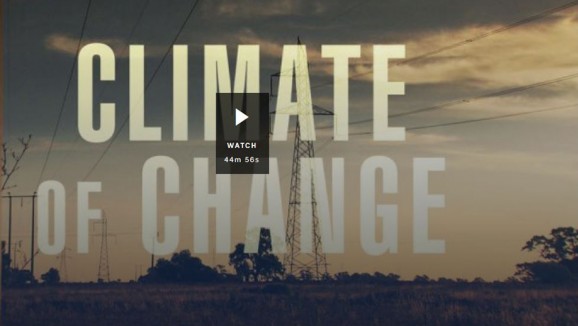
Four Corners: Climate of Change »
Featuring Professor John Hewson and Professor Frank Jotzo
ABC TV, 1 April 2019
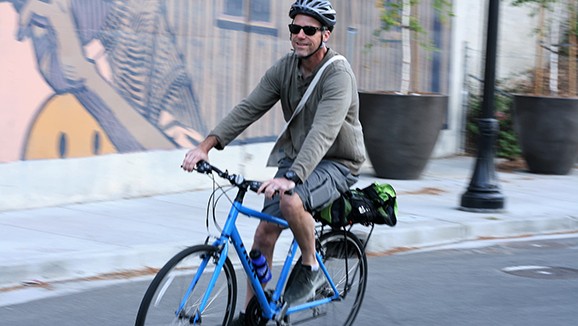
Action on climate change, one person at a time »
Dr Arnagretta Hunter
The Canberra Times, 24 July 2019
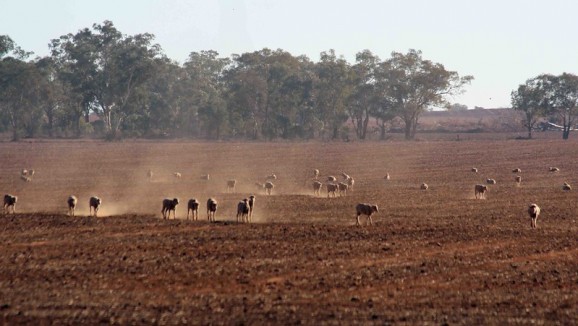
NASA satellite data reveals depths of Australia’s drought »
Featuring Dr Paul Tregoning and Rebecca McGirr
The Australian, 14 June 2019
Photo: Ian Sanderson, Flickr
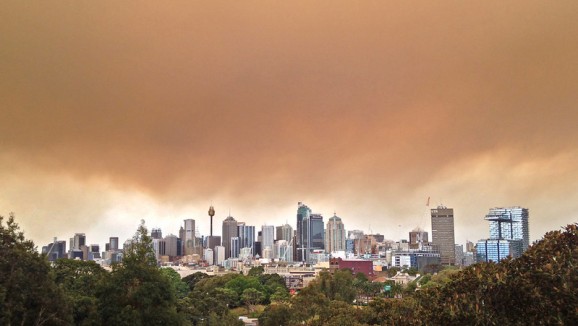
Smoke haze has long-term health impacts, experts warn »
Professor Sotiris Vardoulakis
Daily Telegraph, 16 December 2019
Keep in touch
If you’d like to get involved in ANU climate change activities, subscribe to our newsletter and follow us on social media.
Updated: 2 February 2021/Responsible Officer: College of Science/Page Contact: https://iceds.anu.edu.au/contact





